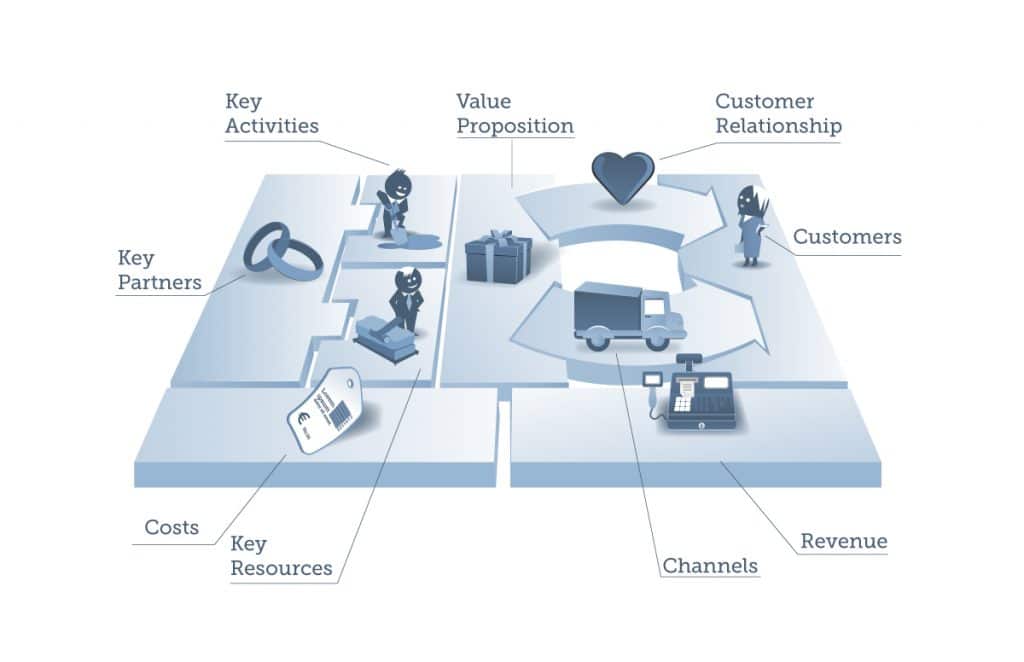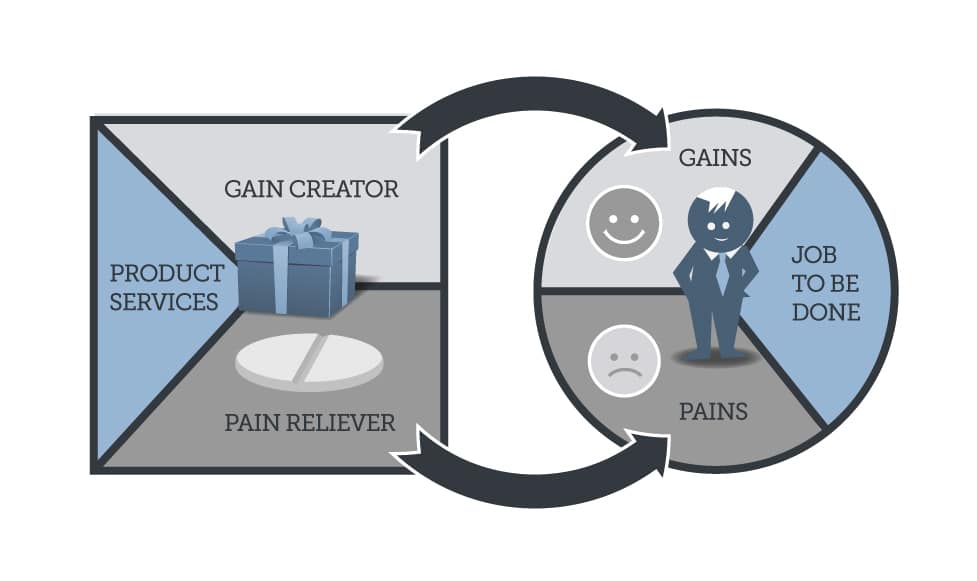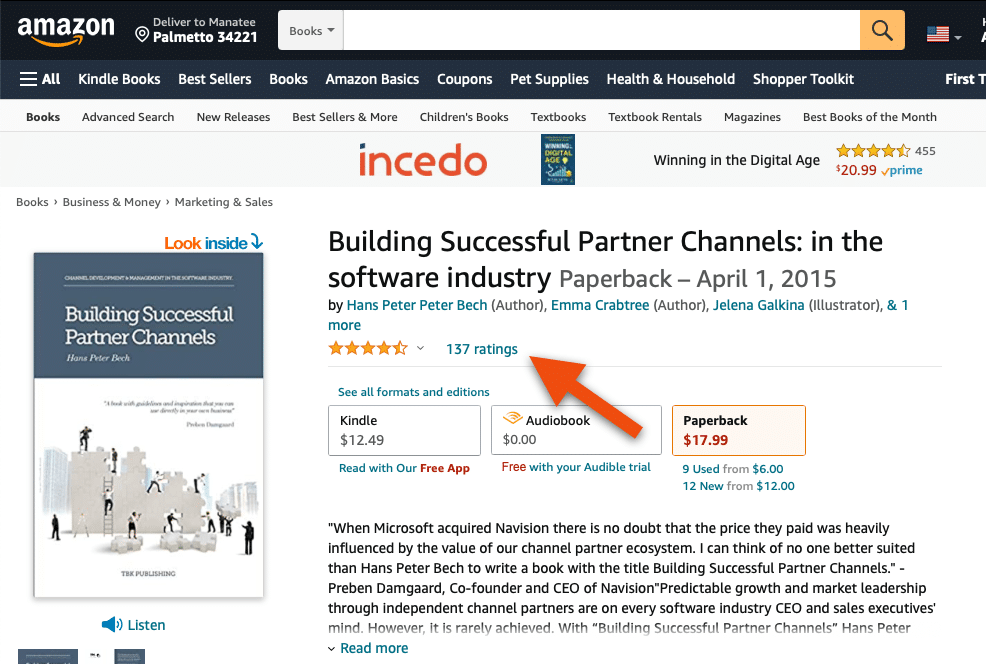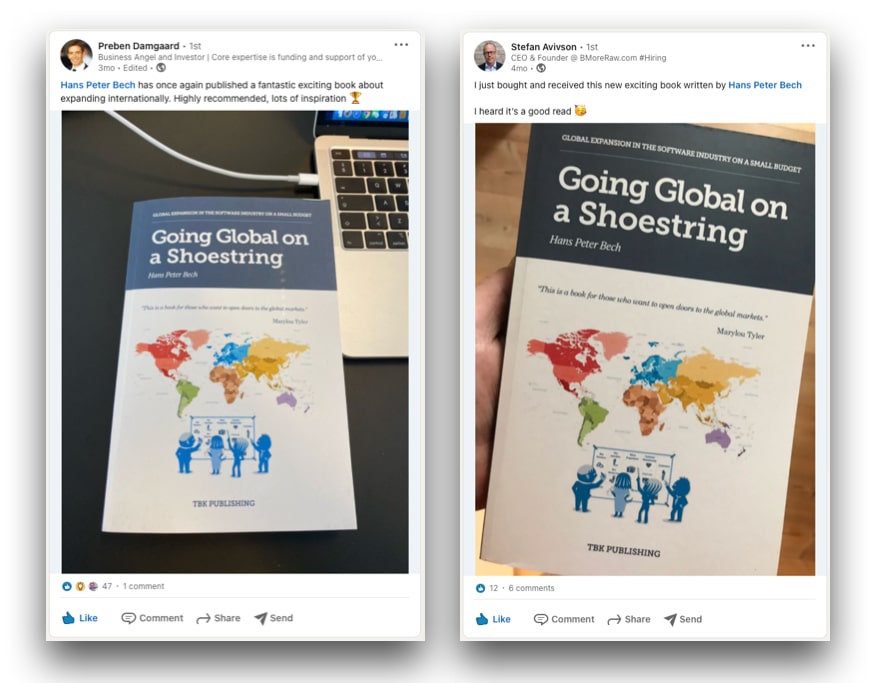This is the sixth article in a series describing how I produce international bestsellers. This time we will be discussing marketing.
Links to the first 5 articles:
- Article 1: How to make an international bestseller
- Article 2: The four main activities in producing a bestseller
- Article 3: Idea and creation
- Article 4: Production
- Article 5: Distribution
Books are bought, not sold
Whenever I am asked how I sell my books, my answer always is that I don’t.
I don’t sell books.
Readers buy them.
And it’s not just a matter of splitting hairs.
Even though my books are targeted at a business audience, they are consumer products. The purchase decision is made by a single person (in most cases), and since the price is not very high, it is a simple one.
I have full control over the process and result of the activities Idea, Creation, Production, and Distribution, but the link between effort and outcome in marketing and promotion is much more blurred. This does not only apply to me and my books, but to marketing in general.
I remember a phrase saying, “I realise that half my marketing spend is wasted; the trouble is, I don’t know which half”.
In this and the next articles, I describe my marketing method and activities, but I can’t claim that I have found the link between effort and outcome. However, I carry out activities and my books are bought every day around the world, so I must be doing something right.
The book’s business model
As a self-publisher, I am in full control of my business model. I use Alexander Osterwalder’s terminology which is thoroughly explained in the book Business Model Generation.
Where the previous articles in this series have primarily focused on the left side of the business model – the back office – we will now discuss the right side – what we also call the front office. This is where I plan and execute the activities that make my potential readers familiar with my offers so they can consider and decide if they want to buy my product – a book.

The business model for my recent book Going Global on a Shoestring looks like this:
Customers: Everyone who works with international sales in software companies. Estimated at five million people when searching LinkedIn. I will elaborate further on my identification of the target audience in the next article where I also describe how I use social media.
Value proposition: In a previous article I have stated that a textbook is a product and not a work of art. When marketing a product, you need to know what value it creates and for whom.

In a marketing context, my books have the advantage that they offer inspiration and help to solve key challenges and jobs for a very well-defined target group.
In other words, if a reader can benefit from just one of the ideas I present, then it can significantly increase her productivity, earnings, and wealth. However, I have chosen not to promise the world. I leave it up to the readers to judge the quality of my books in their reviews. We’ll get back to that.
I define the target group and the value proposition in The Book Summary before I start writing. I may adjust the text along the way, but the overall definitions (value proposition and target group) are fixed from the beginning.
I reuse the text snippets from the book summary in all the marketing activities.
This means that I can start the marketing while the book is being created and ensure that there is active demand on Amazon upon its release.
Channels: The channels I use to market and distribute the book. The marketing is done organically (no ads!) via LinkedIn, Twitter, Facebook, Youtube, and search engines. Distribution takes place via the established system with Amazon (global), IngramSpark (global), Author’s Republic (audio, global), DBK (Denmark), and Publizon (Denmark).
I have made commission agreements for the book 5,460 Miles from Silicon Valley (the english version of Fra Damgaard til Microsoft) directly with some selected bookstores. It has provided a decent sale and is a nice way to be in touch with other book lovers. I don’t make commission agreements for my English language books.
Customer Relationships: I’m happy to connect with 30,000 of my readers on LinkedIn. LinkedIn doesn’t allow more than 30,000 connections, so now you can only follow me (Follow), which many choose to do. From time to time, I go through my connections to make room for new and more active readers.
I get many inquiries and questions from readers. I pretty much always send a “thank you reply” for an inquiry, but rarely respond with an answer directly. Instead, I use the questions as inspiration for articles on my blogs from which all readers can benefit. Readers who want individual advice can start by purchasing a package of two virtual consultations. This type of service has become popular among the readers.
Revenue: The revenue that the book generates directly, and the revenue derived from workshops and the consulting assistance that the book results in.
Key Activities: Include all activities described in these articles.
Key Resources: I work with a permanent staff of freelancers who help with all the practical activities in the process. It’s a huge advantage to work with the same people and not have to shop around every time a task needs doing.
Key Partners: My business model has no Key Partners. Amazon, IngramSpark, Author’s Republic, LaserTryk, DBK, and Publizon are general suppliers that others can use on the same terms. There is nothing special about my relationship with them.
Costs: The costs associated with publishing the book. In a later article, I will give an overview of the costs of the individual parts and activities of Going Global on a Shoestring.
The book exists before it is written
As I mentioned earlier, the cover is one of the first things we design. It makes it possible to create a webpage that shows the book and describes what it is about and whom it is written for.
I also record a short video where I present the book.
Once it’s published and the first reviews are available, I’ll re-record the video where the readers’ enthusiasm is included.
All the marketing activities are intended to drive traffic to the pages on our website where the books are presented. The pages have been successful because in 2020 we had 44,271 unique visitors who read 174,775 pages and spent an average of 53 seconds.
Not everyone who buys the books has been visiting our website. Many find the book in other ways or click directly on e.g. Amazon or Tales from an article or recommendation.
For books in the pipeline, readers can sign up to be notified when they are published. For such early birds, I offer a price reduction. My goal is to get around 1,000 sign-ups, but no more. After all, there is no reason to give a discount to more people than necessary. I will discuss why the number is 1,000 later. Early birds are not the same as pre-orders. I’ll also discuss that later.To build the registration form, save the sign-ups and send out the notifications, I use Mailerlite which I link to our website.
Reviews
Reviews are important. They help readers make a purchase decision.
There are five types of reviews:
- Editorial reviews
- Reader reviews
- Recommendations on social media
- Book bloggers
- Professional reviews
I source the editorial reviews myself.
When the manuscript is almost complete, I contact several people for whom the book is relevant and ask if they would like to write a review. No one has declined yet. Editorial reviews are printed on the back of the book and brought to the front in the electronic version. They are also used on the book’s website and for marketing in general.
Reader reviews are written as the book is purchased on the digital book portals. My book Building Successful Partner Channels has so far received 137 reviews on Amazon. Out of five possible stars, the average is 4.5, which is very high.

Only very few readers rate books and write some lines about their reading experience. Fortunately, quite a few readers write directly to me, and I can then encourage them to write a review. Reader reviews don’t build awareness, but it does make the buying decision much easier for a potential reader, when she can see that other readers are recommending the book.
I copy some of the reader reviews and use them on the book’s webpage.
Recommendations on social media can help spread the message to new readers.

Only a few in your network know they can help you for free by taking a picture of the book and posting it with a short comment on LinkedIn, Facebook, or Twitter. If they include a few hashtags (#) and tag some contacts, the post will have extra reach.
I do it with books that I want to read, and sometimes get a thank you from the author 🙂
You can increase the number of recommendations by explicitly encouraging your contacts to share the message about your new book.
There are not many book bloggers. I am one of them and review books that I enjoy or that I believe may drive relevant traffic to my website.
I don’t contact book bloggers myself, but frequently receive inquiries from authors who offer me a free copy of their book in the hope that I will review it. I rarely accept that. Many of the books are not relevant to me, and I don’t mind buying the books I choose to read.
I am often invited to participate in interviews and podcasts on the topics I write about. I usually accept.
Professional reviews are found in newspapers, magazines, and other mainstream media. Here, reviewers are paid by their media to write reviews. Getting professional reviews is very difficult and for niche books like mine, they do not matter much either. Of course, I would love to see my books featured in The Financial Times and The Wall Street Journal, but that’s unlikely to happen.
My book From Damgaard to Microsoft was mentioned and reviewed in national daily newspapers such Børsen, Berlingske Tidende, Jyllands-Posten and on Danish radio and television (DR, and TV2), but it was solely because it had Preben and Erik Damgaard as the main characters. And because I hired and paid a professional PR consultant to help me.
For my English language books, I am not aiming for professional reviews.
The description of my marketing activities continues in the next article.
